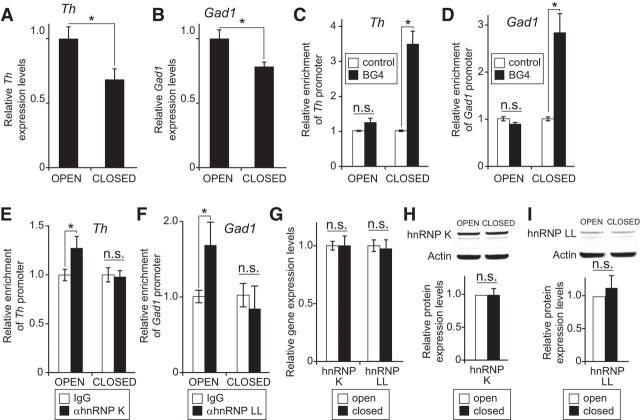Figure 8.
DNA secondary structure formation and hnRNP recruitment on Gad1 and Th promoters in the OB are regulated by odorant-dependent sensory input. A, B, Relative Th and Gad1 expression levels, respectively, measured by qRT-PCR in mouse OB tissue either ipsilateral (closed) or contralateral (open) to unilateral naris occlusion. C, D, ChIP assays with the BG4 antibody detected significantly more G-quadruplex secondary structure on the Th and Gad1 promoters, respectively, in the closed versus open OB. E, ChIP assays showed a significant increase in hnRNP K occupancy on the Th promoter in open versus closed OB. F, ChIP assays showed a significant increase in hnRNP LL occupancy on the Gad1 promoter in the open versus closed OB. G, qPCR analysis indicated that there was no significant difference in either hnRNP K or LL expression levels in the open versus closed OB. H, I, Western blots showed no significant difference in hnRNP K or LL protein expression levels, respectively, in the open versus closed OB. *p < 0.01.

